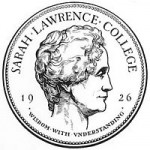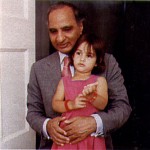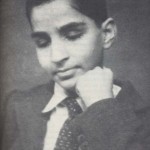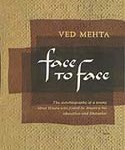Blindness and Self-Perception: The Autobiographies of Ved Mehta
Ludwig Wittgenstein asks in his Remarks on Colour if it would be possible to explain to a blind person what it is like to see. “Certainly,” he thinks, but then he reconsiders, and concludes that the question was “badly put: as if seeing were an activity and there were a description of it.” Of course seeing is an activity and there are (scientific) descriptions of it; but for Wittgenstein the question is badly put because under ordinary, non-scientific circumstances we do not ask what it is like to see. We may ask what it is like to see a given object; but we are most likely to ask what the object itself looks like. We ask, that is, for a description of the object, and from that description we learn both what that particular thing looks like and what it was like to see it.
Now suppose we turn Wittgenstein’s question around: would it be possible to explain to someone who can see what it is like to be blind? Notice that it has become a very different question: the transitive verb to see has been replaced by the intransitive to be blind, because blindness is always understood as a condition, a state of being (or maybe I should say non-being), and not as an activity: indeed, it is the condition brought about by the permanent inactivity of the visual sense. So, we think, we cannot possibly find out what blindness is like in the same way we find out what seeing is like.
Blindness is sightlessness, we say; and when we treat it that way, and not as a perceptual system which is complete in itself (though organized quite differently from the visual system to which most people are accustomed), two results follow. First, any act of perception on the part of a blind person will inevitably be treated as a magical and therefore inexplicable phenomenon; second, the blind person will seldom if ever be asked to describe anything external to himself, for without perception there can of course be no description. There are other results as well: persons who have never been asked to describe anything will be unable to do so when, eventually, they are asked to do it: they will not have developed a descriptive vocabulary, a process which takes much time and collective effort. Thus the blind person attempting to explain what blindness is like will generally end up explaining what it is like not to see instead of detailing the sounds, textures, tastes and odors of his or her experience.
Most importantly of all, the person who cannot describe his or her experience will seem in some crucial way not to exist: description doesn’t simply tell me about an object out there, it tells me about the consciousness of the person describing the object as well. “Tell me what the artist is,” says Henry James, “and I will tell you of what he has been conscious.” Turn this sentence around, and the implications are devastating: if you cannot tell what a person has been conscious of, you cannot tell what that person is.
When I first read Ved Mehta’s Face to Face in l979, I was acting on the assumption that autobiographical narratives by blind individuals would provide the fullest and most reliable accounts of the experience of blindness. But Face to Face was as disappointing as most other narratives of its kind. There was a great deal of circumstantial detail about life in India during the period immediately before and immediately after Independence, and there was a good deal of talk about what it was like not to see; but there was very little about what blindness was like.
I did not put it that way at the time; nor did I understand that, for the reasons I have outlined above—for lack of a language adequate to the task of describing his experience—Mehta could not have said what blindness was like. I had yet to realize, too, that he probably would not have done so even if he had been able to. Like other autobiographical narratives by blind persons,Face to Face tries to satisfy two contradictory desires: the desire on the one hand to justify Mehta’s belief that his blindness makes him special, makes him interesting enough to justify his writing his autobiography at the age of twenty; and the desire on the other hand to make the reader perceive him as a normal human being, whose blindness makes no difference.
As I say, I understood none of this in 1979; I merely lumped Face to Face in with the other books that had disappointed me and forgot about it. My interest revived several years later, however, when I learned that Mehta had returned to the task of autobiography, and found that his newer work was very different than Face to Face. As I shall explain in the following pages, Mehta has come to a new understanding of his medium and its resources, and this in turn has led him to a new apprehension of both his blindness and himself.
Mehta has produced four new autobiographical volumes since Face to Face was published in 1957, all of them explicitly conceived as part of a “large autobiographical work” on which he expects to be engaged “for many years” to come. These new books do not form a kind of extended sequel to Face to Face. The first two—Daddyji (1972) and Mamaji (1979)—are devoted to the lives of his parents in the years before and immediately after Mehta’s birth, and both books end with the attack of meningitis by which Mehta was blinded in 1937, when he was three-and-a-half years old. Vedi (1982) covers a two-and-a-half year span between the ages of five and eight to which Face to Face devotes about fifteen pages, while The Ledge Between the Streams (1984) covers a seven-year period, beginning where Vedi leaves off and ending where the second section of Face to Face had ended—with Mehta, at the age of fifteen, about to depart for America and the Arkansas School for the Blind.
In this context, Face to Face becomes what Mehta calls it in the preface to The Ledge Between the Streams—a “sort of outline” to be fleshed out by newer work. For Face to Face was written, Mehta says in the preface to Vedi, “before I had quite found my voice as a writer and before I had acquired even the rougher implements of the craft. It was also before I had realized that memory expands by some kind of associative process, so that a remembered scene that at first seems hardly worth a line grows in the act of thinking and writing into a chapter, and this full-blown memory uncovers other memories, other scenes, which in turn expand and multiply” (Vedi, n.p.).





